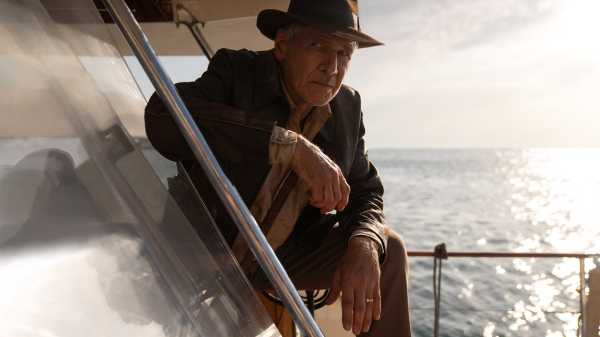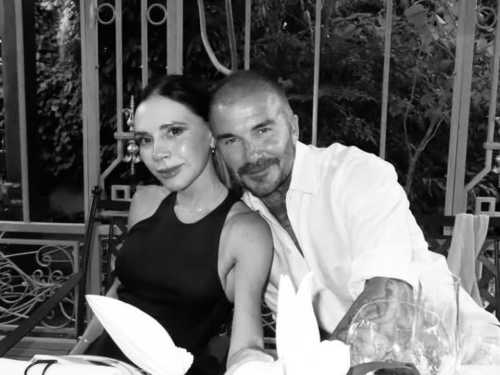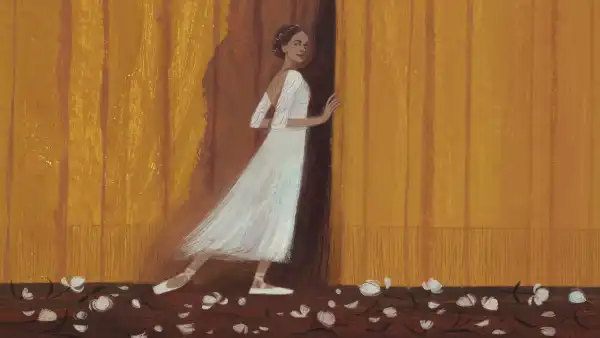
Save this storySave this storySave this storySave this story
It’s been forty-two years since moviegoers met Dr. Henry (Indiana) Jones—a rugged archeologist who relishes fighting over the past a little more than he seems to care for it. “That belongs in a museum,” he growls at a panama-hat-wearing villain who is clutching a precious relic, in “Indiana Jones and the Last Crusade.” “So do you,” Panama Hat replies, before going down with that argument’s ship, a rain-soaked steamer off the Portuguese coast, in 1938.
We’ll soon see if Panama Hat was finally right. “Indiana Jones and the Dial of Destiny” opens on June 30th, and the actor Harrison Ford has said that this will be his last ride as Indy. Put aside the question of whether the new film will be good, or—as the New Yorker film critic Pauline Kael clocked in the character’s first outing, “Raiders of the Lost Ark,” from 1981—whether an Indiana Jones movie markets nostalgia more than it delivers wholly coherent characters. For many, this Indy movie will feel like losing a complicated uncle, whose charm is most amusingly measured by searching the Internet for “the Indiana Jones of.” (My favorites: “The Indiana Jones of Anesthesiology” and “The Indiana Jones of Spanish Baroque Music.”)
For others, though, it will be a last chance to argue over whether Indy’s adventures were more than just fun. It’s a simmering question whether George Lucas, Steven Spielberg, and the screenwriter Lawrence Kasdan funnelled something more complicated, even malign, into their creation. As a self-righteous American archeologist whose playground was other people’s history, Indy always seemed destined for an exhibit in the American Museum of Pop Culture. But, now that he’s finally being measured for his display case, what should our response be? Good riddance or a fond farewell?
Archeologists tend to swing between thanking Indy for attracting popular interest in their field and protesting that his fiction leaves an inaccurate impression. The early-twentieth-century explorer Hiram Bingham would have felt a connection. My first book was a history of how this “real-life Indiana Jones” struggled with Peruvian scholars such as Luis E. Valcárcel and Julio César Tello over the tombs and “lost cities” of the Incas. Bingham, a Yale historian, made the Inca citadel Machu Picchu famous in the pages of National Geographic—it was the first archeological site the magazine ever celebrated—but he ended his career as an explorer in Peru after he paid for artifacts to be smuggled to the States. In 1954, Bingham’s story shaped Charlton Heston’s star vehicle “Secret of the Incas.” The movie’s nods to Peruvian cultural-patrimony laws anticipated Peru’s successful campaign to get Yale to return Machu Picchu’s tombs more than five decades later, and—crucially—inspired Indy’s set pieces and iconic fedora and leather jacket in “Raiders.”
In other words, Indiana Jones is outré, but hardly divorced from reality. When we learn about that supposed golden age of globe-trotting American adventuring and archeology, and about how it felt to the people being “collected,” Indy becomes a sort of fun-house mirror. His firm stance on punching Nazis has lately been praised. His pseudo-archeology, relationship with a colleague’s daughter, and fights with dialogue-less Indigenous warriors and “Thuggee cult” members? Not so much, especially since the cartoony “Kingdom of the Crystal Skull,” from 2008, played with the idea that behind ancient Andean achievement lay the handiwork of aliens. Yet even this fiction has its roots in nineteenth-century American anthropology. The more we delve into that field’s deep and recent past, the less escapist Indy becomes: he can remind us of harassment and abuse on digs and in graduate programs, exploitations of “native” communities and informants, and a history of racist theories about the “mysteries” of Indigenous cultural achievement—a trope that, zombie-like, keeps eating our brains like Ancient Aliens.
At-risk communities and scholars have long worked to highlight and correct that history, and allied anthropologists and archeologists have tried to do better. At its best, anthropology defends difference, and has worked harder than many academic fields to address past colonialisms. But its museums are filled with skeletons, and we face them by knowing their origins. Earlier this year, I met Akeia de Barros Gomes, an archeologist and museum curator who spoke feelingly of the need to disrupt the internal colonialism of American museums, so as to restore community control. Gomes found her way into archeology through a childhood viewing of “Raiders,” followed by a subscription to National Geographic from her grandfather. We get there how we get there. Indiana Jones’s museum label might work best as an epitaph for a brand of American anthropology and pseudo-archeology in which white men crashed their way through other people’s bodies and histories.
And yet it feels disloyal not to explain why many from my generation—I was born in May of 1981, making me a month older than “Raiders”—adored Indy. It’s all about “Indiana Jones and the Last Crusade.” Without that third installment in the franchise, the series probably would have faded after the mean-spirited “Indiana Jones and the Temple of Doom.” Instead, “Last Crusade”—whose script was punched up by the playwright Tom Stoppard—reveals why Indy is the way he is. He is Dr. Henry Jones, Jr., to Sean Connery’s Dr. Henry Jones, Sr., a medievalist whose obsession with the Holy Grail, and whose withholding of fatherly interest, seem to have spawned Indy’s two-fisted rebellion against the temples and mummies that withhold the past. (With apologies to Philip Larkin: “They fuck you up, your professor parents.”) This revelation is played for laughs, but it humanizes Indy with a genealogy of genius and absence. The two men’s reconciliation during the movie is an emotional dénouement as affecting as it is inevitable. Jones, Sr., finally sees and respects “Indiana,” and Indy uses what he learned from Sr. to attain the Grail and cure his father’s wounds. Healed, they ride off into the sunset.
Spielbergian sentiment, perhaps, but it gave the series an actual heart: Indiana Jones is also about adventuring with a parent into the secrets of the world, and saving them along the way. Or trying to, at least. I met Indy in northern New Jersey in the spring of 1990, shortly after my parents separated and my father, an anthropologist, moved back to New York. My sister and I spent our weekends with my father at the movies, or visiting museums. He was a charming man, but also a maddeningly mysterious one, easy to lose in a bookstore or the South Pacific rooms of the American Museum of Natural History. So, when my mother and her friend rented “Last Crusade” on video, to give my sister and me something to watch so they could talk quietly about that other great Spielbergian subject, divorce, I saw something familiar in the TV’s reflection. And I loved him. If I imprinted on Indy for the same reason that I later rolled my eyes knowingly at his struggle to get his father’s attention, it’s nothing I haven’t laughed at with a therapist. And, to my dad’s credit, he got the joke. His enthusiasm for me and my book about the failings of Machu Picchu’s “real-life Indiana Jones” meant the world to me, even as I tired a little of his attempts to keep the joke alive with occasional gifts of Indiana Jones kitsch. I now cared far more about Andean history and culture and scholars than the men in hats who tried to steal their legacy.
But then my lovely, adventuresome father died, of COVID, in November, 2020, and I did not want him behind glass. Like many in that moment, I couldn’t make it across the country to be with him during his final days. I had to mourn him in place. We planned an online memorial and went through the things that he had given us throughout the years, real and immaterial. I wanted to make sense of what he had left me, what I wanted to pass on to my own two sons, and what I could let go. And in an old desk I found two action figures, Henry Jones, Jr., and Sr., that my father had given me before I, in my infinite thirty-year-old wisdom, declared the franchise “problematic.”
The figures stopped me short. Kael’s attempted death blow in her review of “Raiders” was the observation that “George Lucas is in the toy business.” But she missed how toys, and movies, provide children—and even adults—a space to concentrate big feelings, playing with them, making them manageable. Improbably, these disposable pieces of plastic survived when my father had not. I could hold Indiana Jones, Sr., in my hand. This was nothing as meaningful as reading my father’s favorite poems, or walking together beside a trout stream. But it was something, nonetheless. We get there how we get there.
My wife and I kept the Indiana Jones movies from our sons (eight and five) until a few weeks ago. I had turned forty-two, and we were celebrating my final proofread of a history of Inca mummies that I had to finish while mourning an ancestor of my own. We were turning the page on a difficult but beautiful chapter. We chose “Last Crusade,” agreeing that “Raiders” and “Temple of Doom”—one of the movies that led to the invention of the PG-13 rating—were off the table. We hung a sheet on the wall, plugged a projector into the Blu-ray player, and let it wash over us. It wasn’t “Dora and the Lost City of Gold” or “Pachamama,” two good recent kids’ movies where South American writers, actors, or language consultants make Andean culture the point of their story. But the boys loved it, and we did, too. At the crucial moment, when Jones, Sr., is shot and Jones, Jr., faces his father’s loss, my eight-year-old stole a glance at me to make sure I was O.K.
I think we both were. Afterward, he went to his Legos and began re-creating his favorite scene: when Jr. and Sr. are tied together in chairs, back to back, hopping around the Nazi castle that the father has accidentally lit on fire and the son must help him escape. My son used the Henry Jones, Jr., and Sr. minifigs I had given my own dad on a Father’s Day long ago.
“What do you think?” he asked. Did I like them?
Of course I did. They belonged in a museum. ♦
Sourse: newyorker.com






